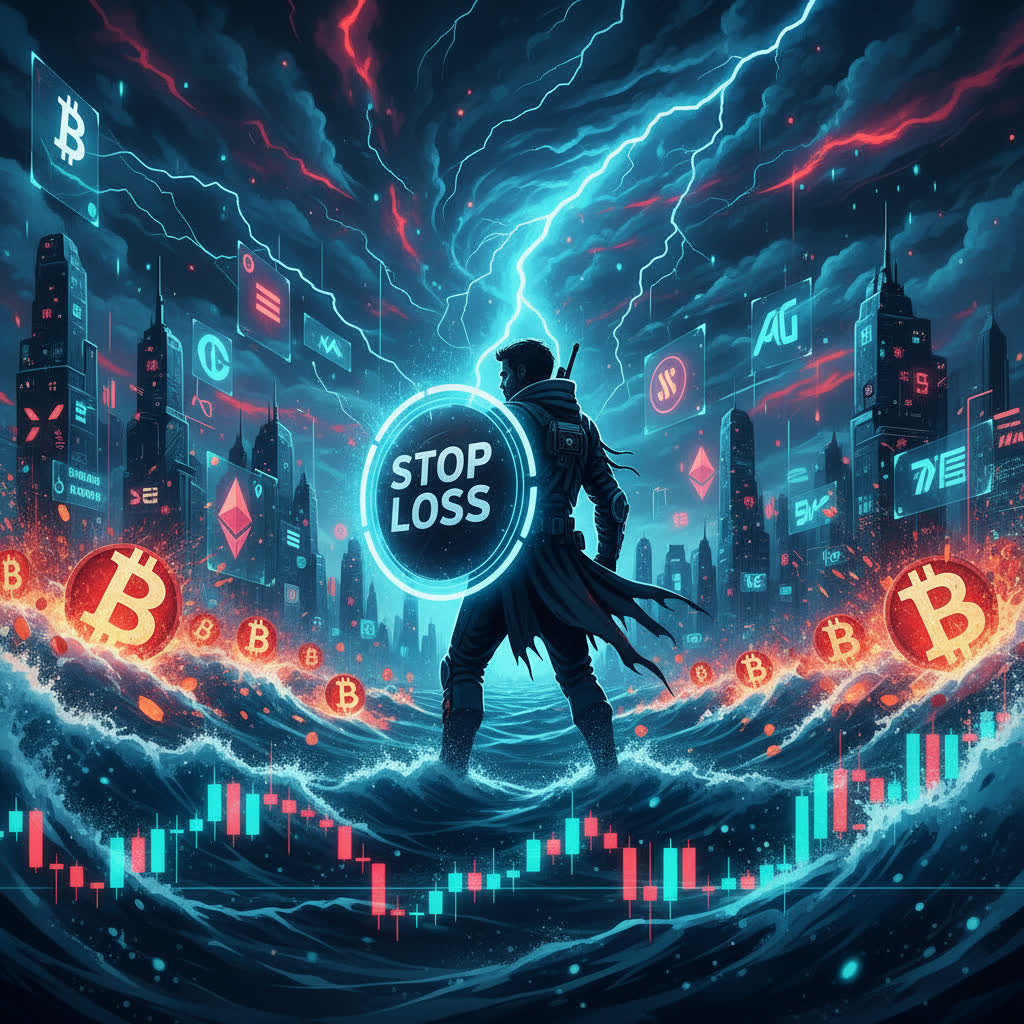In the ever-volatile world of cryptocurrency, many investors treat “cutting losses” as unnecessary — even as an admission of failure. Yet the reality is clear: cutting losses isn’t about giving up. It’s about surviving and preserving your capital in a market that shows no mercy.
1. The Common Mistake: Refusing to Cut Losses Out of Fear
New crypto investors often enter the market with the belief that “if I hold long enough, it’ll come back.” They convince themselves that prices will soon recover, enduring 5%, 10%, even 20% losses without exiting a trade — only to watch their portfolio vanish as prices keep falling.
One of the biggest mistakes in trading is refusing to accept a small loss, which eventually leads to a much bigger one. Crypto history is full of examples of traders who turned temporary setbacks into irreversible damage simply because they couldn’t hit the “sell” button.
2. Cutting Losses Is Not About Losing Money – It’s About Saving Money
The true purpose of a stop-loss is to limit the maximum damage to your capital. Professional traders often apply a fixed percentage rule — for instance, never risk more than 2% of total capital per trade.
By setting such boundaries, even when the market turns violent, you can still protect your funds and stay ready for the next opportunity.
Example: Imagine entering a long position on Bitcoin at $32,000 with a stop-loss at $31,360 (a 2% loss). If BTC dips to $31,400, you might feel regret. But when the price later crashes to $30,800, that “painful” decision becomes your saving grace.
The stop-loss isn’t your enemy; it’s your armor.
3. Discipline: The Secret to Keeping Your Account Alive
Cutting losses isn’t just a money management technique — it’s a psychological training tool.
When traders know exactly how much they can lose before they enter a trade, they stop panicking when volatility hits. They stop reacting emotionally and start acting rationally.
Discipline separates the survivors from the victims. It’s what allows a small trading account to grow steadily over time, rather than being wiped out in one bad trade.
A trader without discipline might have luck once or twice — but a trader with discipline can last for years, even in the harshest conditions.
4. The Core Lesson: No Discipline, No Profit
The crypto market doesn’t punish those who are wrong — it punishes those who refuse to admit they’re wrong.
A 2% loss might sting for a few minutes, but refusing to cut a losing trade can destroy your entire account. In the end, survival in crypto isn’t about making the most money; it’s about staying in the game long enough to seize the next opportunity.
Conclusion
Cutting losses isn’t a sign of defeat. It’s the most intelligent survival strategy in the crypto battlefield. Those who know when to stop don’t just protect their capital — they protect their mind, their discipline, and their future as investors.
In crypto, you don’t win by being right all the time — you win by managing risk better than the crowd. The stop-loss is not your weakness. It’s your greatest strength.
Ready to start your cryptocurrency journey?
If you’re interested in exploring the world of crypto trading, here are some trusted platforms where you can create an account:
- Binance – The world’s largest cryptocurrency exchange by volume.
- Bybit – A top choice for derivatives trading with an intuitive interface.
- OKX – A comprehensive platform featuring spot, futures, DeFi, and a powerful Web3 wallet.
- KuCoin – Known for its vast selection of altcoins and user-friendly mobile app.
These platforms offer innovative features and a secure environment for trading and learning about cryptocurrencies. Join today and start exploring the opportunities in this exciting space!

Join our crypto community for news, discussions, and market updates: CryptoBCC on Telegram.

Disclaimer: Always do your own research (DYOR) and ensure you understand the risks before making any financial decisions.




